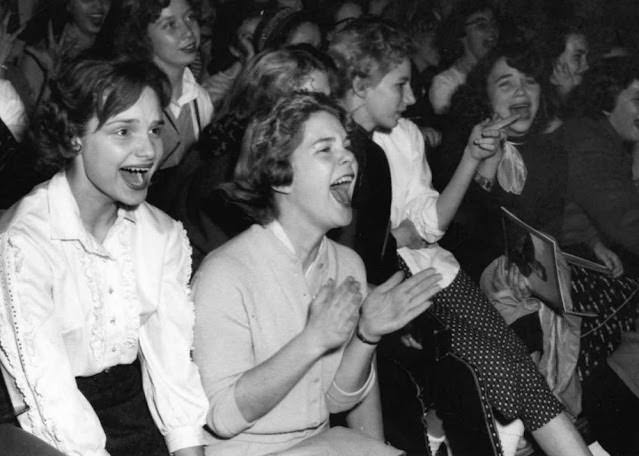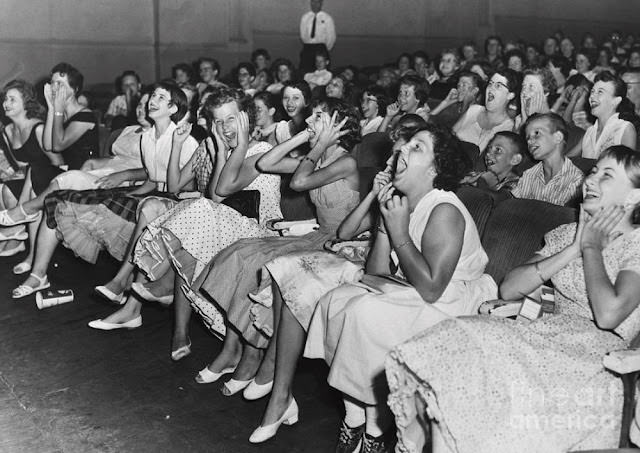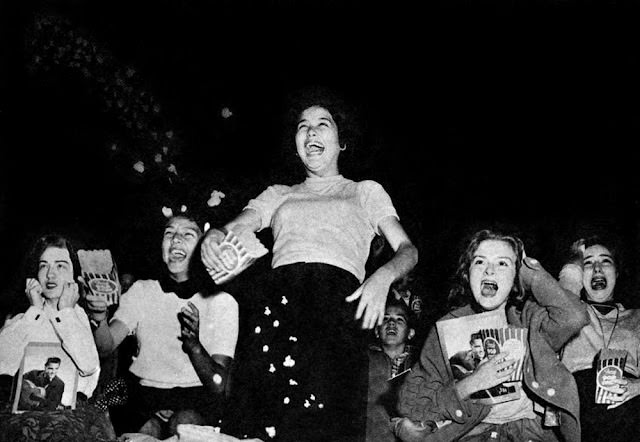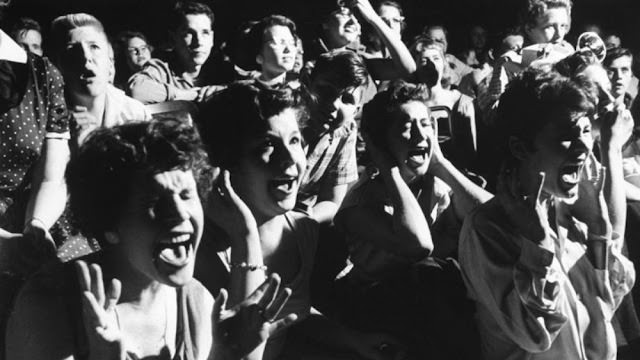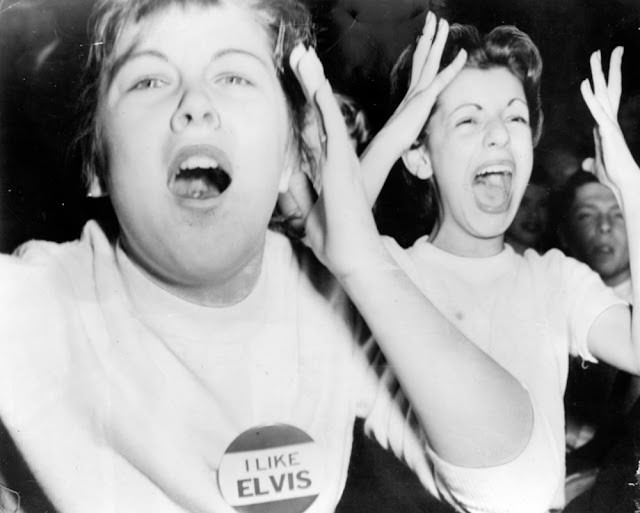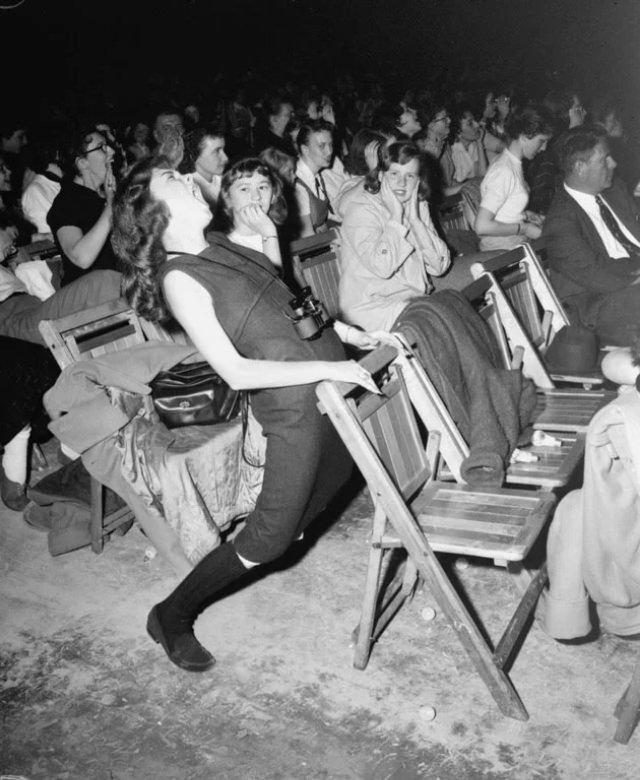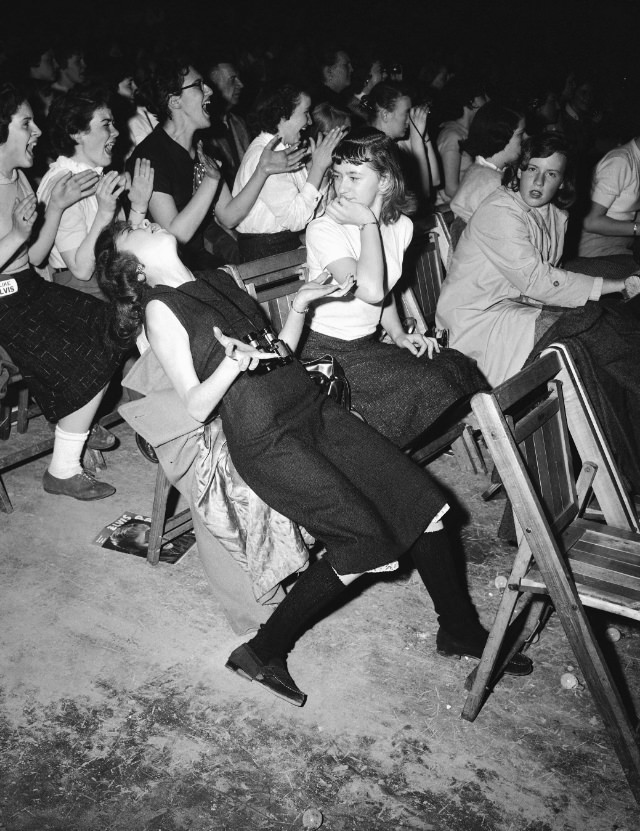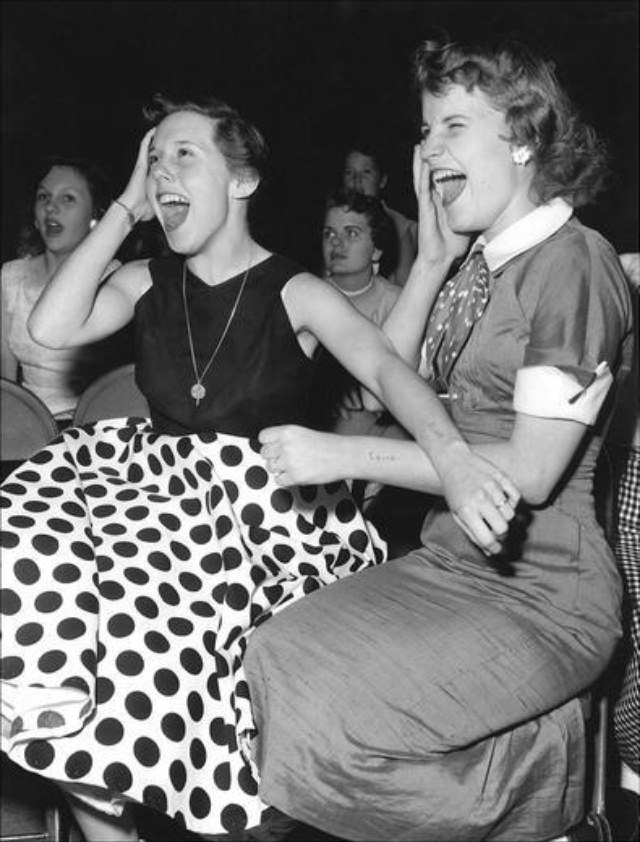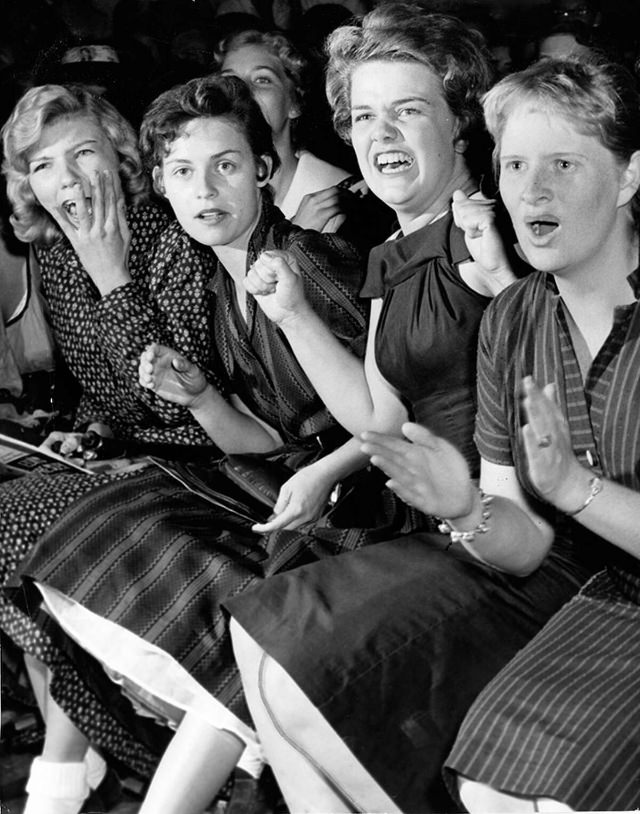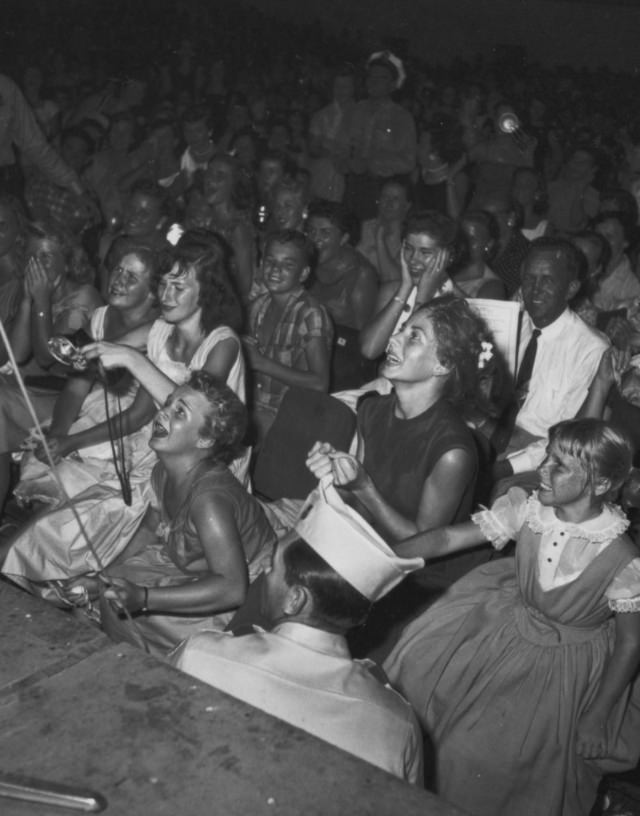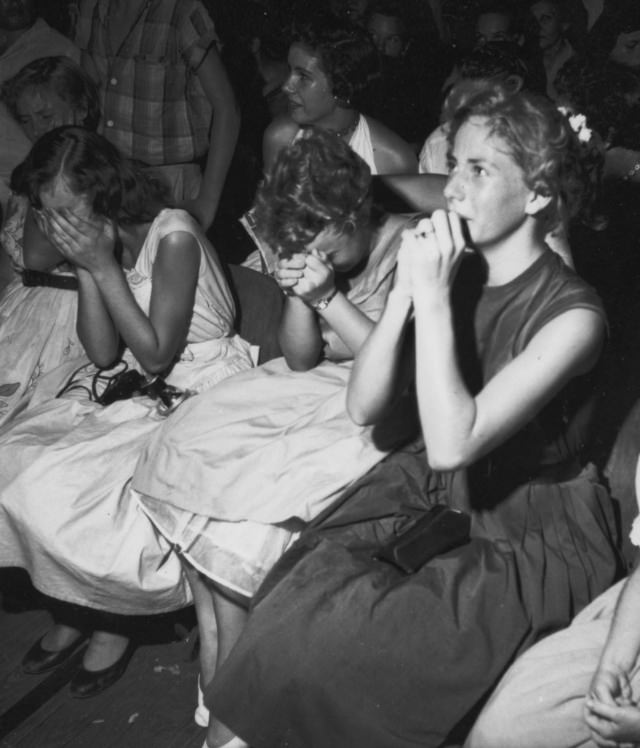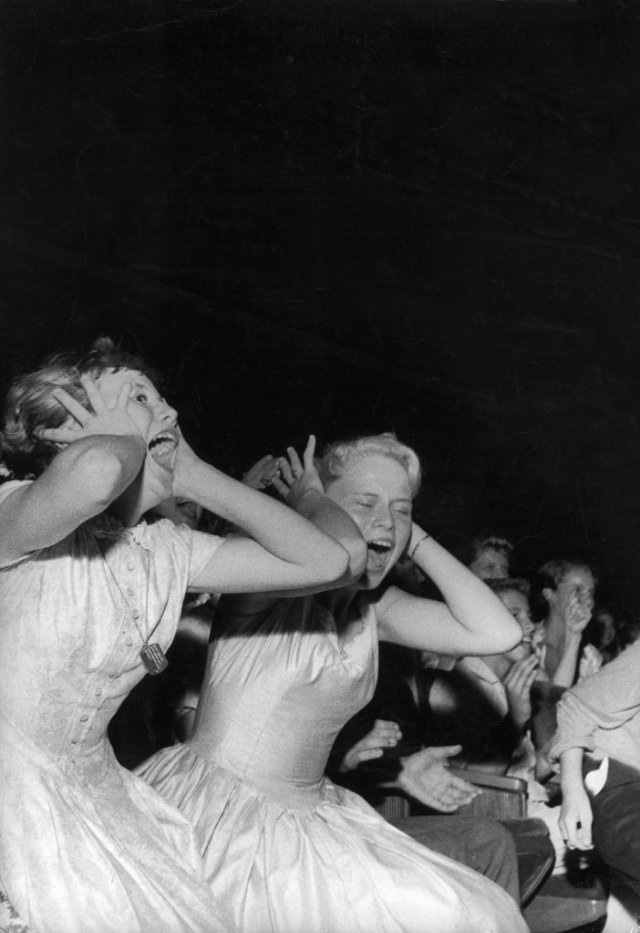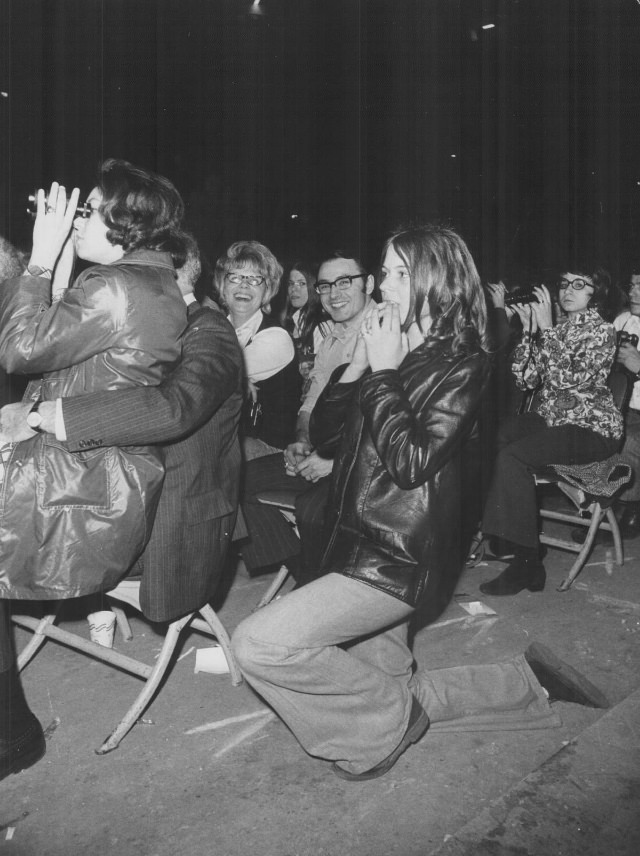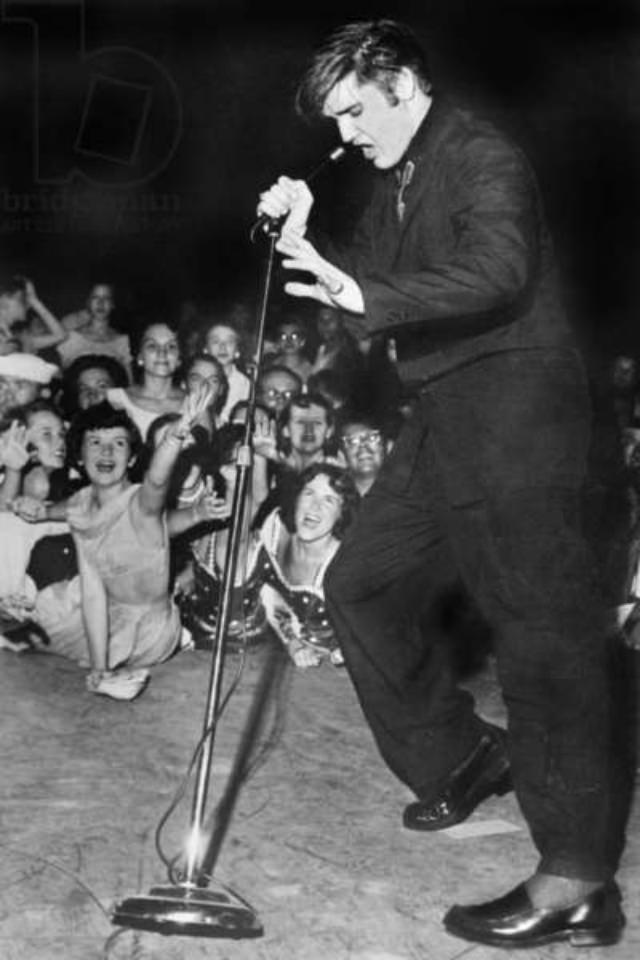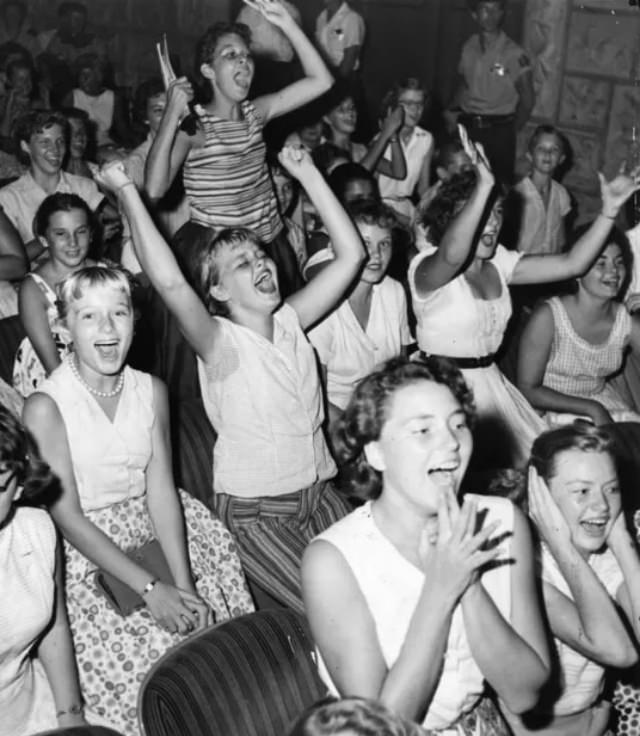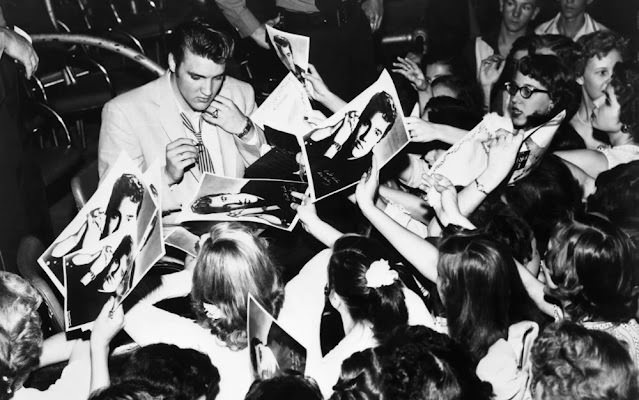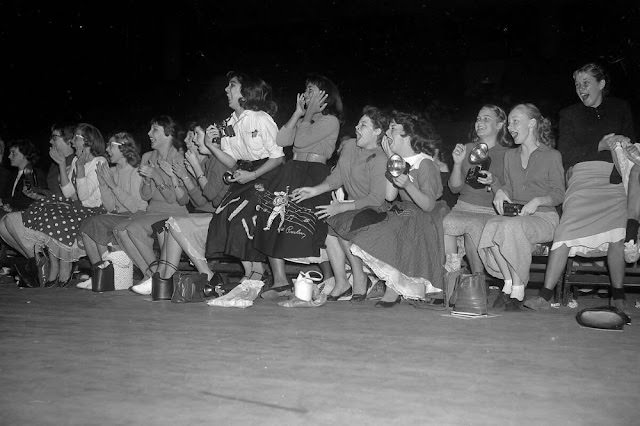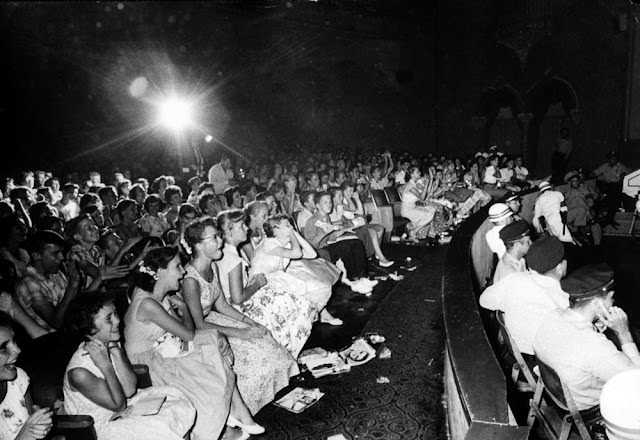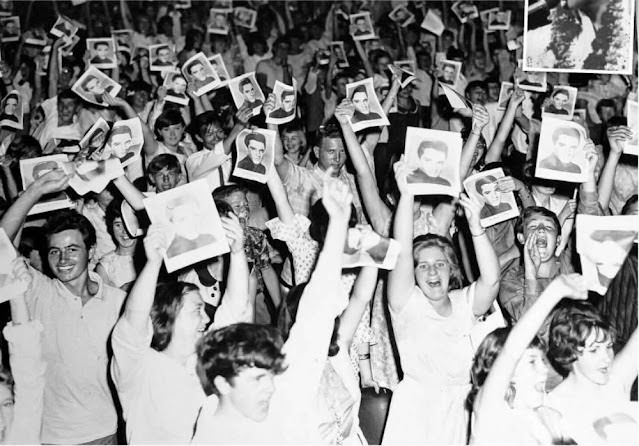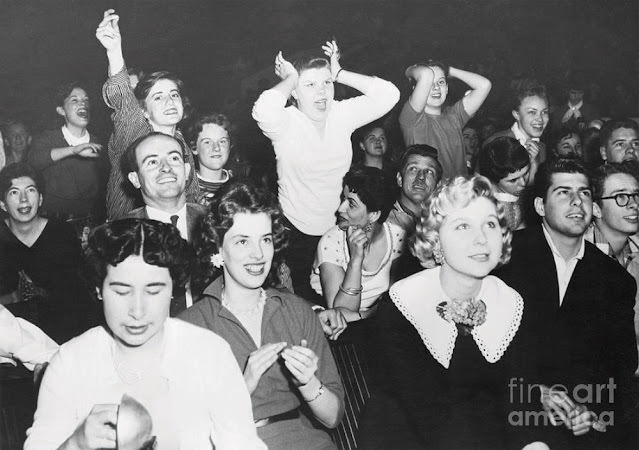In the 1950s, Elvis Presley took the music world by storm. His concerts were legendary not just for his groundbreaking music and energetic performances, but also for the incredible reactions from his fans, especially teenage girls. These young fans would swoon, scream, and cry, creating a frenzied atmosphere that defined the rock and roll era.
The Birth of Rock and Roll
Elvis Presley, often called the “King of Rock and Roll,” began his rise to fame in the mid-1950s. His unique blend of country, blues, and rockabilly music, combined with his charismatic stage presence and good looks, made him an instant sensation. Songs like “Heartbreak Hotel,” “Hound Dog,” and “Don’t Be Cruel” topped the charts and captured the hearts of millions.
The Fan Frenzy Begins
As Elvis’s popularity grew, so did the intensity of his fans’ reactions. Teenage girls were drawn to his rebellious image and magnetic charm. At his concerts, these fans expressed their admiration in dramatic ways. It wasn’t uncommon to see girls fainting, crying uncontrollably, and screaming at the top of their lungs. This phenomenon became known as “Elvis Mania.”
Read more
A Typical Elvis Concert
A typical Elvis concert in the 1950s was a high-energy affair. As soon as Elvis took the stage, the audience erupted into cheers and screams. Girls would often rush towards the stage, trying to get as close as possible to their idol. Security had to work hard to keep the crowd in check, as the excitement often turned into chaos.
Elvis’s performances were electrifying. He moved with a rhythm and energy that was new and exciting. His famous hip-shaking dance moves were both thrilling and controversial, adding to the frenzy. Fans would scream his name, cry tears of joy, and even throw personal items like scarves and notes onto the stage.
Emotional Reactions
The emotional reactions of teenage girls at Elvis’s concerts were unlike anything seen before. Many fans described feeling an overwhelming sense of joy and excitement. Some would cry tears of happiness just at the sight of Elvis. Others would scream so loudly that their voices would be hoarse by the end of the concert.
This intense emotional connection was a result of several factors. Elvis represented a new, rebellious form of music that spoke to the younger generation. His good looks and stage presence made him an object of admiration and desire. For many teenage girls, Elvis was more than a musician; he was a cultural icon and a symbol of youthful freedom and expression.
Media Attention
The media took notice of the fervor surrounding Elvis’s concerts. Newspapers and magazines often featured stories about the wild scenes at his shows. Photographs of swooning, screaming fans became iconic images of the 1950s. Television broadcasts and newsreels showed footage of the hysteria, further fueling Elvis’s popularity and mystique.
The media attention also highlighted the generational divide between teenagers and their parents. Many adults were shocked and concerned by the extreme reactions of Elvis’s fans. They viewed rock and roll as a disruptive force and worried about its influence on young people. This only added to the allure of Elvis for his teenage fans, who saw him as a symbol of rebellion against the older generation.
Fan Clubs and Merchandise
Elvis’s fan base was highly organized. Fan clubs sprang up all over the country, giving teenage girls a way to connect with others who shared their admiration for the King of Rock and Roll. These clubs often organized trips to concerts, shared news, and updates about Elvis, and collected memorabilia.
Merchandise also played a big role in Elvis Mania. Fans could buy records, posters, clothing, and even Elvis-themed school supplies. This merchandise helped fans feel a closer connection to their idol and allowed them to express their devotion in their everyday lives.


